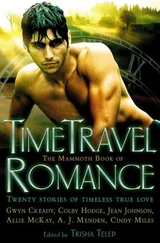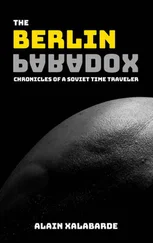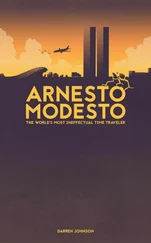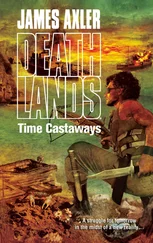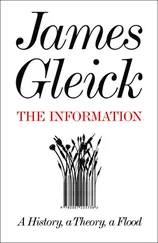James Gleick - Time Travel
Здесь есть возможность читать онлайн «James Gleick - Time Travel» — ознакомительный отрывок электронной книги совершенно бесплатно, а после прочтения отрывка купить полную версию. В некоторых случаях можно слушать аудио, скачать через торрент в формате fb2 и присутствует краткое содержание. Год выпуска: 2016, Издательство: Knopf Doubleday Publishing Group, Жанр: Старинная литература, на английском языке. Описание произведения, (предисловие) а так же отзывы посетителей доступны на портале библиотеки ЛибКат.
- Название:Time Travel
- Автор:
- Издательство:Knopf Doubleday Publishing Group
- Жанр:
- Год:2016
- ISBN:нет данных
- Рейтинг книги:5 / 5. Голосов: 1
-
Избранное:Добавить в избранное
- Отзывы:
-
Ваша оценка:
- 100
- 1
- 2
- 3
- 4
- 5
Time Travel: краткое содержание, описание и аннотация
Предлагаем к чтению аннотацию, описание, краткое содержание или предисловие (зависит от того, что написал сам автор книги «Time Travel»). Если вы не нашли необходимую информацию о книге — напишите в комментариях, мы постараемся отыскать её.
Time Travel — читать онлайн ознакомительный отрывок
Ниже представлен текст книги, разбитый по страницам. Система сохранения места последней прочитанной страницы, позволяет с удобством читать онлайн бесплатно книгу «Time Travel», без необходимости каждый раз заново искать на чём Вы остановились. Поставьте закладку, и сможете в любой момент перейти на страницу, на которой закончили чтение.
Интервал:
Закладка:
Another vision of the future, also utopian in its way, appeared in 1892: a book titled Golf in the Year 2000; or, What Are We Coming To, by a Scottish golfer named J. McCullough (given name lost in the mists). When the story begins, its narrator, having endured a day of bad golf and hot whiskies, falls into a trance. He awakens wearing a heavy beard. A man solemnly tells him the date. “ ‘It is’ (and he referred to a pocket almanac as he spoke) ‘the twenty-fifth of March, 2000.’ ” Yes, the year 2000 has advanced to pocket almanacs. Also electric lights. In some respects, though, the golfer from 1892 discovers that the world evolved while he slept. In the year 2000 women dress like men and do all the work, while men are freed to play golf every day.
Time travel by hibernation—the long sleep—worked for Washington Irving in “Rip Van Winkle,” and for Woody Allen in his 1973 remake, Sleeper. Woody Allen’s hero is Rip Van Winkle with a modern set of neuroses: “I haven’t seen my analyst in two hundred years. He was a strict Freudian. If I’d been going all this time, I’d probably almost be cured by now.” Is it a dream or a nightmare, if you open your eyes to find your contemporaries all dead?
Wells himself dispensed with the machinery in a 1910 novel, The Sleeper Awakes, which was also the first time-travel fantasy to discover the benefits of compound interest. Anyway, sleeping into the future is what we do every night. For Marcel Proust, five years younger than Wells and two hundred miles away, no place heightened the awareness of time more than the bedchamber. The sleeper frees himself from time, floats outside of time, and drifts between insight and perplexity:
A sleeping man holds in a circle around him the sequence of the hours, the order of the years and worlds. He consults them instinctively as he wakes and reads in a second the point on the earth he occupies, the time that has elapsed before his waking; but their ranks can be mixed up, broken….In the first minute of his waking, he will no longer know what time it is, he will think he has only just gone to bed….Then the confusion among the disordered worlds will be complete, the magic armchair will send him traveling at top speed through time and space.
Traveling, that is, metaphorically. In the end, the sleeper rubs his eyes and returns to the present.
Machines improved upon magic armchairs. By the last years of the nineteenth century, novel technology was impressing itself upon the culture. New industries stirred curiosity about the past as well as the future. So Mark Twain created his own version of time travel in 1889, when he transported a Connecticut Yankee into the medieval past. Twain didn’t worry about scientific rationalization, but he did frame the story with some highfalutin verbiage: “You know about transmigration of souls; do you know about transposition of epochs—and bodies?” For A Connecticut Yankee in King Arthur’s Court the means of time travel is a bang on the head: Hank Morgan, the Yankee, gets beaned with a crowbar and awakens in a verdant field. Before him sits an armor-clad fellow on a horse, wearing (the horse, that is) festive red and green silk trappings like a bed quilt. Just how far the Connecticut Yankee has traveled he discovers in this classic exchange:
“Bridgeport?” said I, pointing.
“Camelot,” said he.
Hank is a factory engineer. This is important. He is a can-do guy and a technophile, up-to-date on the latest inventions: blasting powder and speaking-tubes, the telegraph and the telephone. So was the author. Samuel Clemens installed Alexander Graham Bell’s telephone in his home in 1876, the year it was patented, and two years before that he acquired an extraordinary writing machine, the Remington typewriter. “I was the first person in the world to apply the typemachine to literature,” he boasted. The nineteenth century saw wonders.
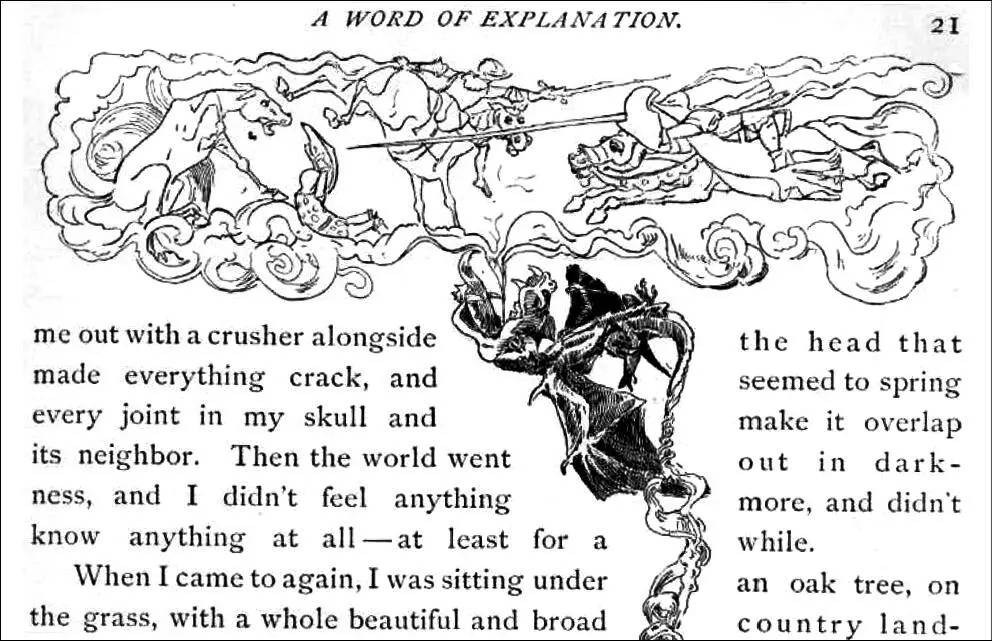
Credit 2.2
The steam age and the machine age were in full swing, the railroad was shrinking the globe, the electric light turning night into never-ending day, the electric telegraph annihilating time and space (so the newspapers said). This was the true subject of Twain’s Yankee: the contrast of modern technology with the agrarian life that came before. The mismatch is both comic and tragic. Foreknowledge of astronomy makes the Yankee a wizard. (The nominal wizard, Merlin, is exposed as a humbug.) Mirrors, soap, and matches inspire awe. “Unsuspected by this dark land,” Hank says, “I had the civilization of the nineteenth century booming under its very nose!” The invention that seals his triumph is gunpowder.
What magic might the twentieth century bring? How medieval might we seem to the proud citizens of that future? A century earlier, the year 1800 had passed with no special fanfare; no one imagined how different the year 1900 might be. *2Time awareness in general was dim, by our sophisticated standards. There is no record of a “centennial” celebration of anything until 1876. (The Daily News, London, reported, “America has been of late very much centennialised—that is the word in use now since the great celebration of this year. Centennials have been got up all over the States.”) The expression “turn of the century” didn’t exist until the twentieth. Now, finally, the Future was becoming an object of interest.
The New York industrialist John Jacob Astor IV published a “romance of the future” six years before the turn of the century, titled A Journey in Other Worlds. In it he forecast myriad technological developments for the year 2000. Electricity, he predicted, would replace animal power for the movement of all vehicles. Bicycles would be fitted with powerful batteries. Enormous high-speed electric “phaetons” would roam the globe, attaining speeds as great as thirty-five to forty miles an hour on country roads and “over forty” on city streets. To support these carriages, pavement would be made of half-inch sheets of steel laid over asphalt (“though this might be slippery for horses’ feet, it never seriously affects our wheels”). Photography would be wonderfully advanced, no longer limited to black and white: “There is now no difficulty in reproducing exactly the colours of the object taken.”
In Astor’s year 2000, telephone wires girdle the earth, kept underground to avoid interference, and telephones can show the face of the speaker. Rainmaking has become “an absolute science”: clouds are manufactured by means of explosions in the upper atmosphere. People can soar through space to visit the planets Jupiter and Saturn, thanks to a newly discovered antigravitational force called “apergy”—“whose existence the ancients suspected, but of which they knew so little.” Does that sound exciting? It all seemed “terribly monotonous” to the reviewer for the New York Times: “It is a romance of the future, and it is as dull as a romance of the Middle Ages.” It was Astor’s fate, too, to go down with the Titanic.
As a vision of an idealized world, a sort of utopia, Astor’s book owed a debt to Edward Bellamy’s Looking Backward, the American bestseller of 1887, likewise set in the year 2000. (Time travel by sleep again: our hero enters a trance of 113 years.) Bellamy expressed the frustration of not being able to know the future. In his story “The Blindman’s World” he imagined that we earthlings are alone among the universe’s intelligent creatures in lacking “the faculty of foresight,” as if we had eyes only at the backs of our heads. “Your ignorance of the time of your death impresses us as one of the saddest features of your condition,” says a mysterious visitor. Looking Backward inspired a wave of utopias, to be followed by dystopias, and these are so invariably futuristic that we sometimes forget that the original Utopia, by Thomas More, was not set in the future at all. Utopia was just a faraway island.
Читать дальшеИнтервал:
Закладка:
Похожие книги на «Time Travel»
Представляем Вашему вниманию похожие книги на «Time Travel» списком для выбора. Мы отобрали схожую по названию и смыслу литературу в надежде предоставить читателям больше вариантов отыскать новые, интересные, ещё непрочитанные произведения.
Обсуждение, отзывы о книге «Time Travel» и просто собственные мнения читателей. Оставьте ваши комментарии, напишите, что Вы думаете о произведении, его смысле или главных героях. Укажите что конкретно понравилось, а что нет, и почему Вы так считаете.


